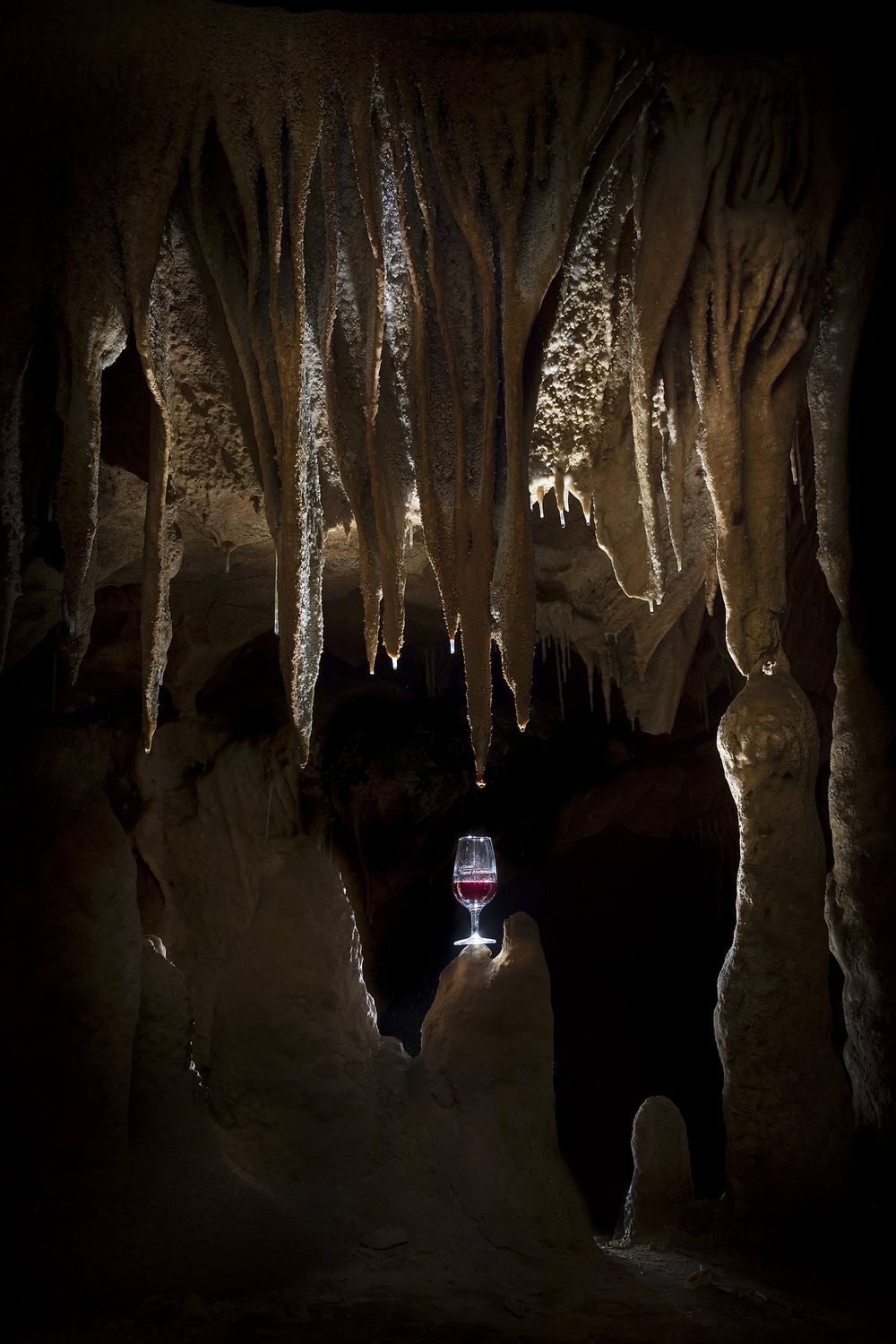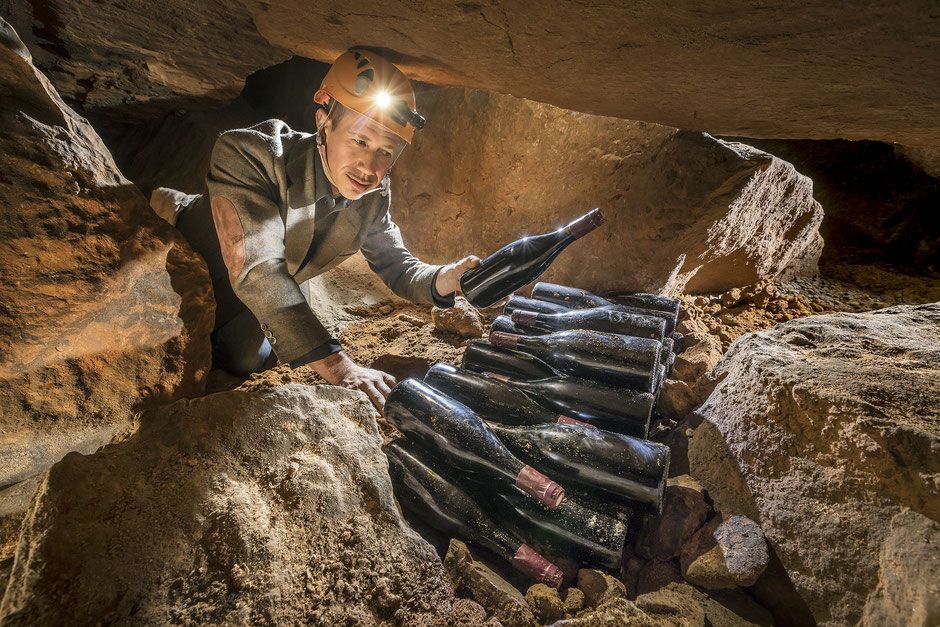Vinolithic is a Grenache-heavy Côtes-du-Rhône Villages blend from Domaine Notre Dame de Cousignac that has been aged for a year in perfect conditions. The tasting was to compare the same wine aged above ground to see what effect the cave has on the wine.
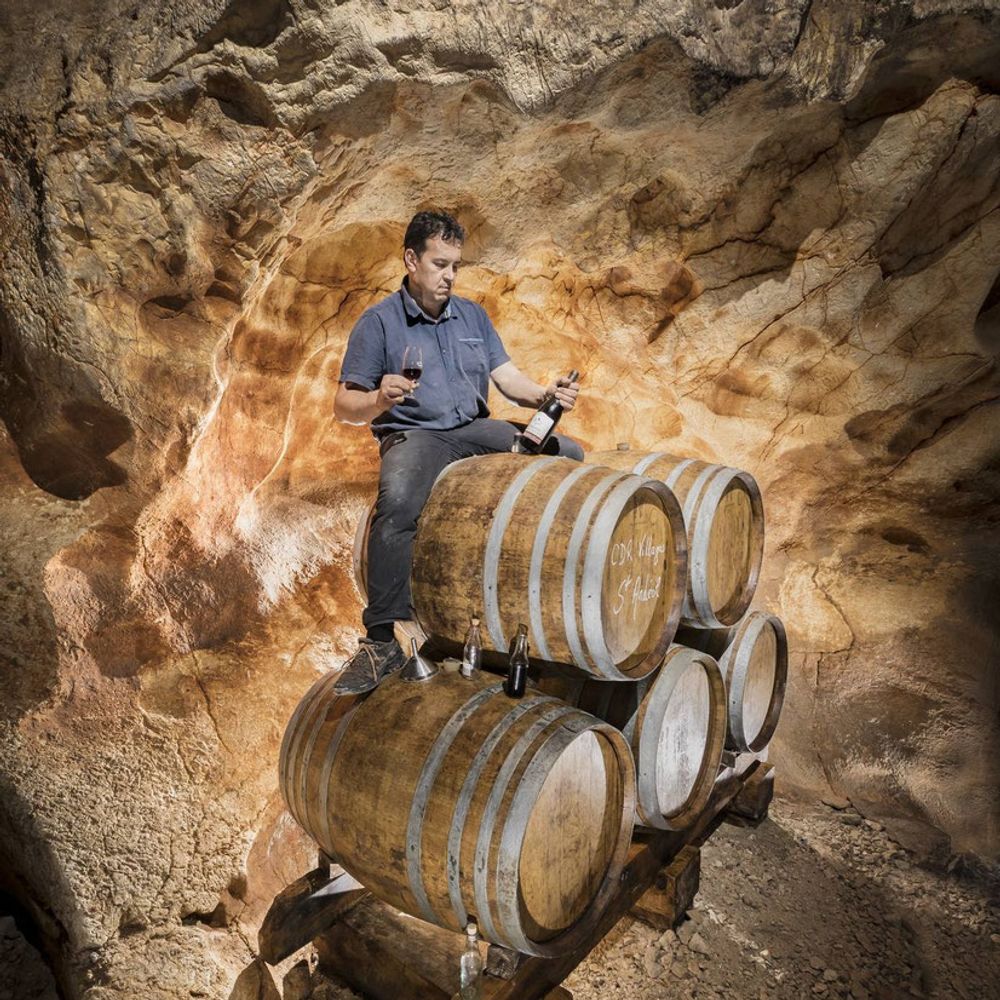
Raphael Pommier, winemaker at Domaine Notre Dame de Cousignac, with barrels of Vinolithic
The choice was simple and a no-brainer really. Did we want to visit the Palais des Papes in Avignon (no wine included) or did we want to visit a cave in the Ardèche to taste wine that had been aged in a cave, then have a traditional Ardèche picnic (wine included)?
A quick Google search to check out the wine-tasting in the cave and it all looked pretty respectable – smart people tasting wine in smart clothes in a well-lit cavern. Load the picnic hamper!
Fast-forward a couple of days and there I am on a zipwire in a caving suit hurtling through ‘The Cathedral’ the largest cave in the Ardèche, a couple of glasses of red wine inside me, smack into a greasy, muddy bank… in the pitch black. That’s not to mention the tightrope walking.
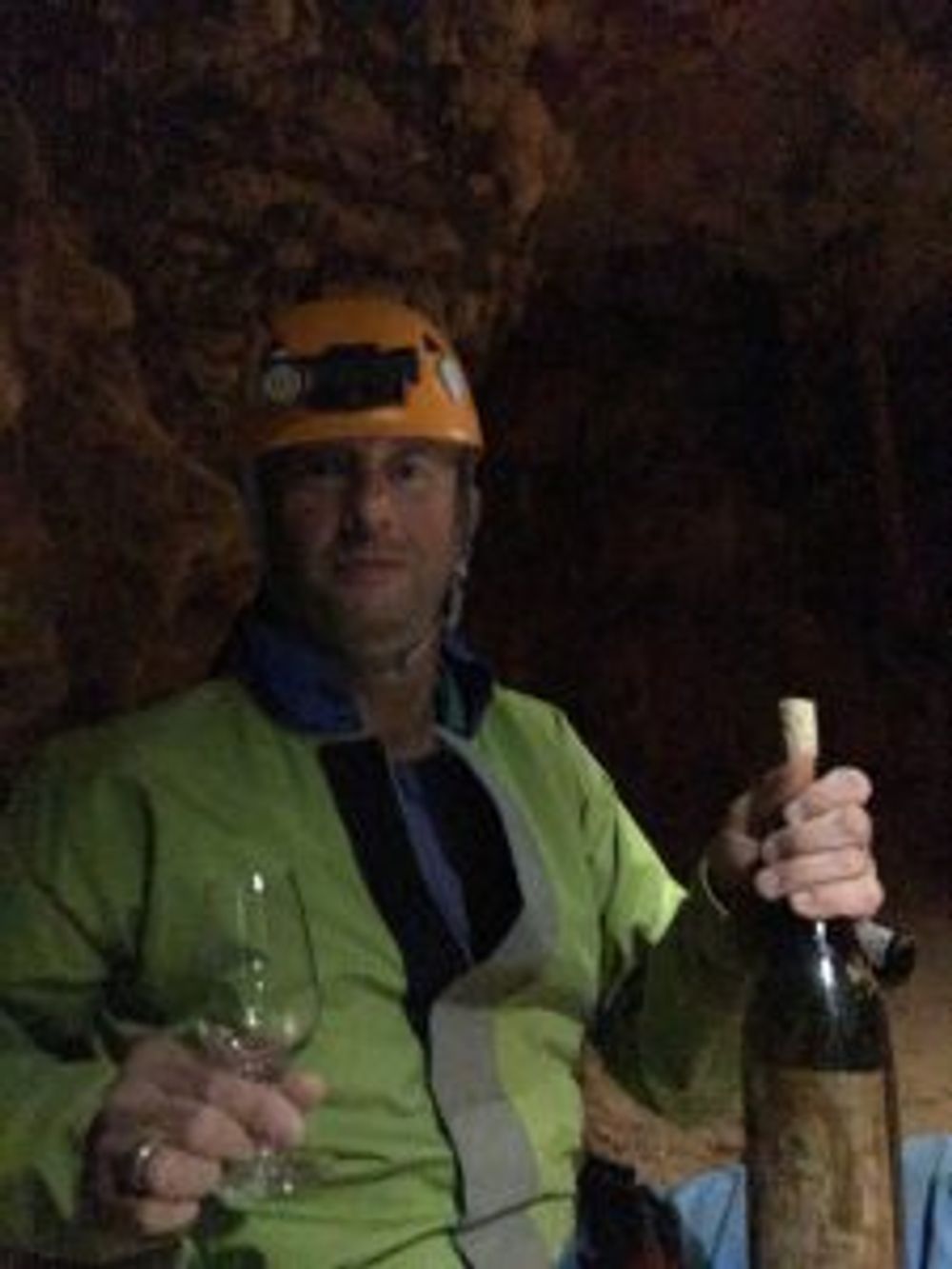
Peter Dean: note the tight-lipped smile
Turns out I didn’t research this well enough – the wine tasting in a cave is in full caving kit, hard hats and flashlights. When we taste the wine it is 100m below the ground…with all the lights off, and the only sound an occasional drip of water. Because of the purity of the conditions, leaving anything behind in the cave is strictly verboten – and that means wine – this was one of the first wine tastings I had ever been to where spitting was not an option.
“Does anyone get claustrophobic?” our guide asked us before we started our descent into the dark hole in the ground.
“Yes a little. Are we going to be going underwater and squeezing through small gaps?”

Come back Lindley Hall all is forgiven
“Don’t worry,” he said, sizing me up, “do you think us French people would be able to squeeze through small gaps?”
Err how about a straight answer mate?
The reply was unconvincing. Forgot to tell him about my fear of heights. Damn.
Our guide also hadn’t (or pretended he hadn’t) heard about the Thai boys who, at the time of the visit, were still stuck in a cave in Thailand.
“The WiFi is pretty bad here.”
How about the emergency phone reception I wondered.
So there we were being led by a cave guide and Raphaël Pommier, the winemaker at Domaine Notre Dame de Cousignac who’s been experimenting with ageing barrels in the St Marcel d’Ardèche Caves for the past few years. In his knapsack are a number of wines he wants us to taste underground – most importantly Vinolithic that has a label bearing a recreation of the 22,000 year-old cave painting that you can see when you descend, although the original doesn’t have the cow carrying a large bunch of grapes, obviously.
A blend of 80% Grenache, 15% Syrah and 5% Carignan, Vinolithic is an organic wine made from fruit grown on limestone and deep beds of iron-rich clay, the same clay that is being wedged into my trainers. The grapes have been picked at night, de-stemmed, with a soft maceration and long fermentation then aged for 12 months in wooden barrels in the cave complex.
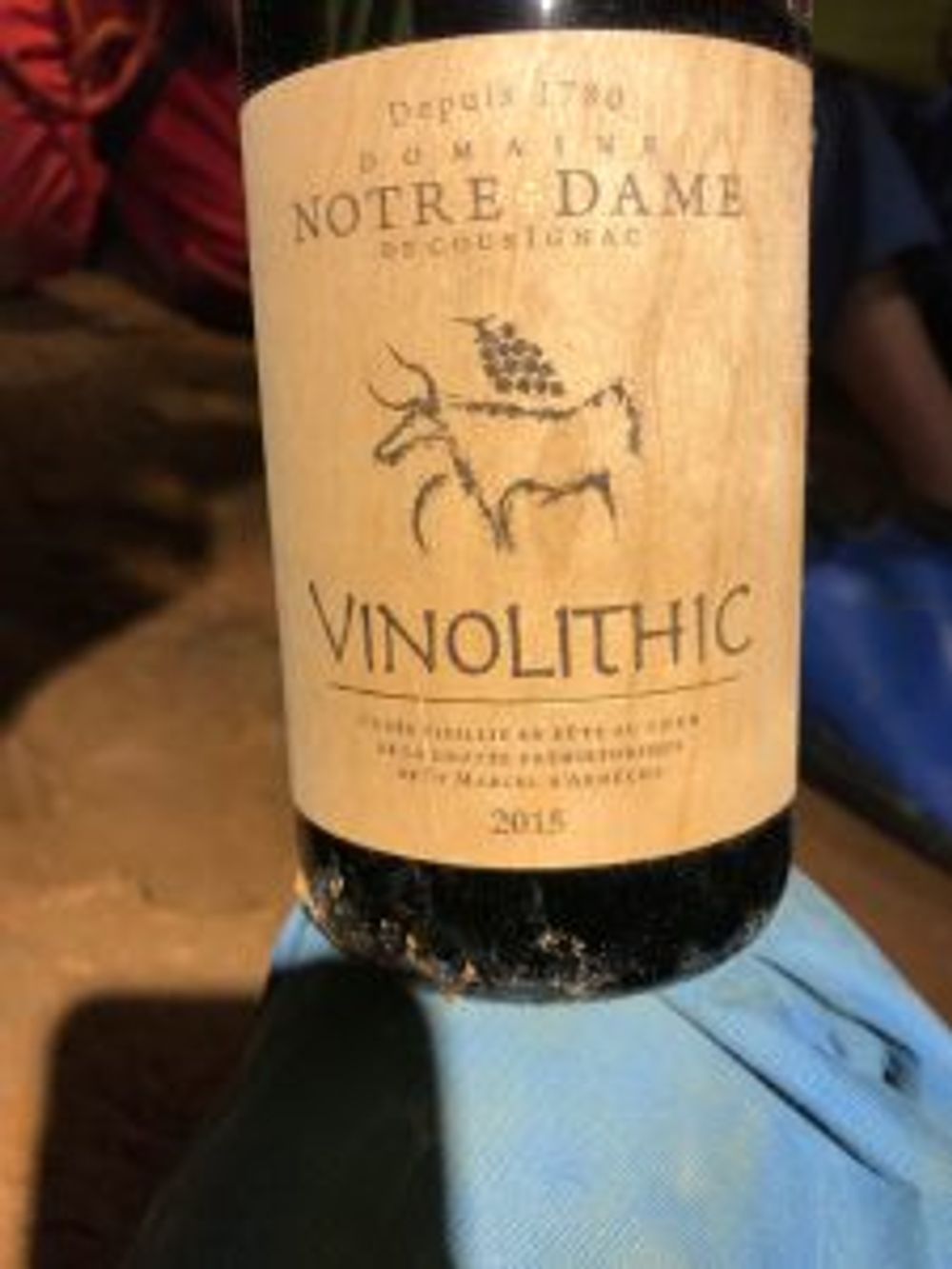
Pommier maintains that the caves provide perfect ageing conditions – no light, a constant 13.8°C, 87% humidity and an abnormally high percentage of C02 in the air. It is the C02 levels that he thinks is most significant.
Vinolithic like a number of other wines in this area has, since 2017, been given the new denomination of Côtes-du-Rhône Villages Saint Andéol.
After an hour of burrowing underground, away from the tourist routes, we come to the chamber that will be our tasting room. The wine is poured and then we are instructed to all turn our lights off and maintain strict silence.
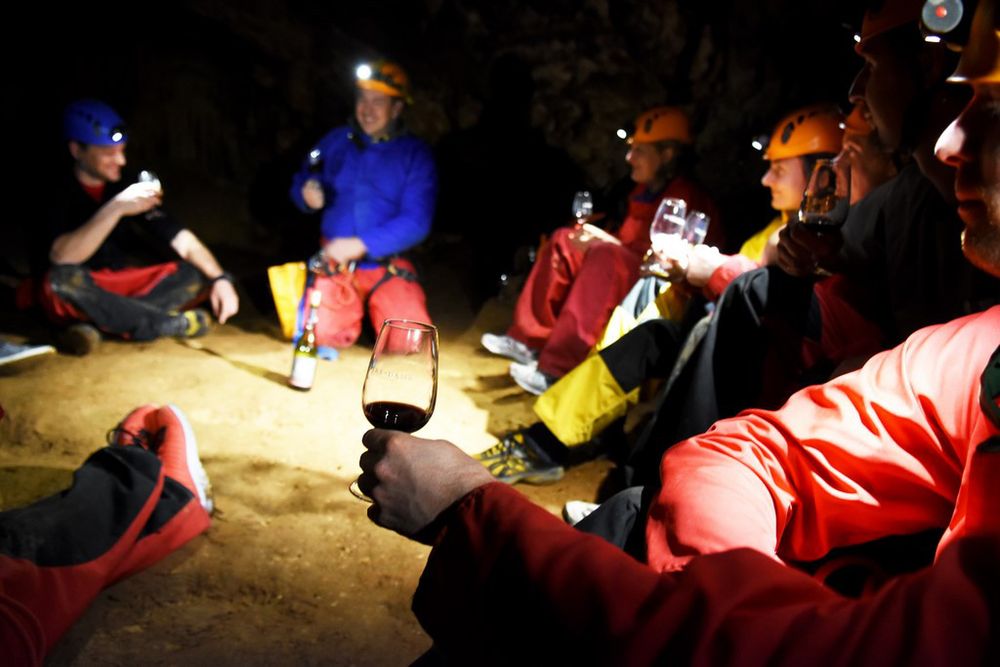
The tasting – just before the lights went out
I am a big fan of blind tasting – it does concentrate the mind – and have had some extreme versions over the years. There was the tasting in the blackout restaurant Dans le Noir, and then there was the blind tasting in California, conducted in eye masks and led by a blind wine expert.
This tasting in the St Marcel d’Ardèche Caves was one step beyond – this was complete and quite uncomfortable sensory deprivation. Weirdly I still closed my eyes tight even though with eyes wide open you couldn’t see a thing.
You also couldn’t hear a peep out of anything. Would anyone be able to hear our screams?

Raphaël Pommier: “It’s the Co2 that makes the difference”
First we tasted Vinolithic without cave ageing and then we tasted the wine that had been aged. The difference was really quite striking. The first was a pleasant enough Côtes-du-Rhône Villages with black cherry, dark chocolate, thyme and gingerbread notes. The cave-aged was clearly from the same stock but the freshness, minerality, elegance were much more profound, there was more peppermint coming through on the palate as well. It might have been my imagination but the cave ageing seemed to lend the wine more sous bois/ mushroomy character.
Half an hour of tasting later, experiment successfully concluded, we headed upwards but quelle surprise! In order to get back to terra firma we had to zipwire 50m across stalagmites and then walk across a wire tightrope. It really would have helped to have had a spittoon back in the cave.
By the time we got to the surface in time for the picnic I was covered in clay and my wife was rueing the decision to wear white trousers! A quick hose down, great picnic and then a quick drive to the airport and we’re on the plane back home, my trainers still soggy and reeking of cave and clay, smells that prodigious use of the Duty Free samplers couldn’t erase.
So this is what it smells like to be a potter with a drink problem.
